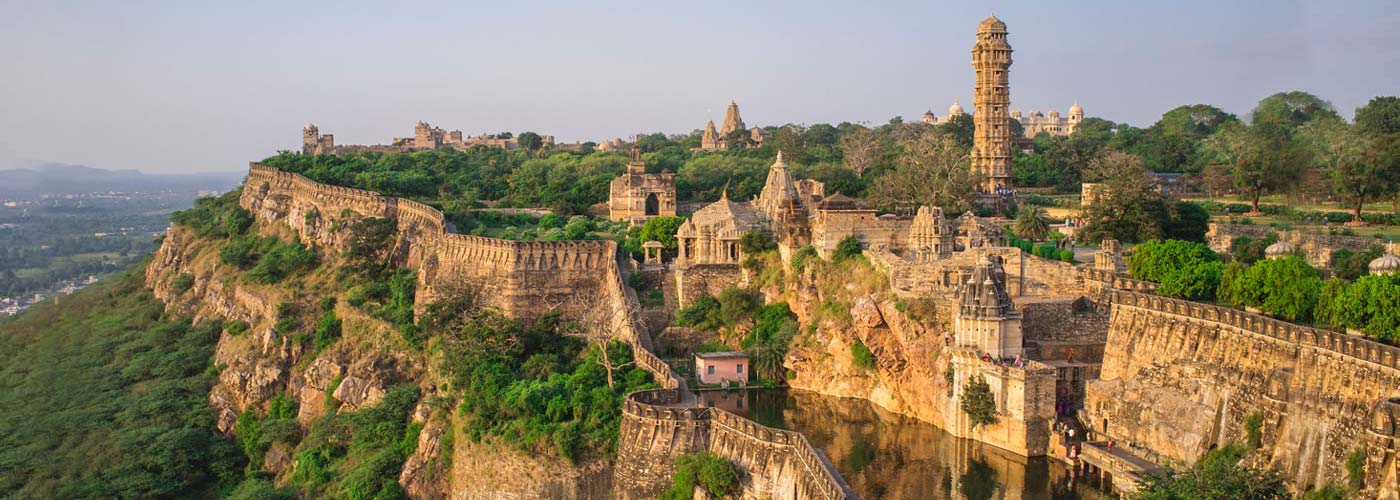Padmini Palace Chittorgarh
Padmini Palace Chittorgarh, a legendary white three-storey building, was built in the 15th century and is located in the southern part of the Chittorgarh Fort. It is placed in the middle of a small basin. It is widely believed that Alauddin Khilji was dazed by the beauty of Padmini and the desire to win her convinced him to destroy Chittor. In the battle that ensued, Maharana Ratan Singh was killed and Rani Padmini committed Jauhar. The beauty of Rani Padmini is compared to that of Cleopatra and her life story is an eternal legend in the history of Chittorgarh.
Rani Padmini Beauty, Brains, and Bravery
Rani Padmini, the wife of the King of Chittorgarh (Mewar) Rawal Ratan Singh, was renowned for her beauty and graceful charm. In fact, it was this beauty that attracted Ratan Singh to the Singhal king’s land where Padmini was the princess. Ratan Singh wooed and wed Padmini and received a huge dowry. Ratan Singh’s courtier Raghav Chetan incurred a reputation as a sorcerer. It may have been this or his demand of a share in the dowry – whatever the reason – the king banished Raghav Chetan who promised to exact revenge. He made his way to the court of Alauddin Khilji in Delhi. Raghav Chetan tried to entice an anti-Hindu Khilji to attack Chittorgarh, but his plans didn’t seem to work well. It was only when he started to describe Rani Padmini’s beauty that Khilji considered attacking the state and taking the queen forcefully.
When Khilji laid siege to Chittorgarh, he realized that the well fortified kingdom would not surrender. He sent message to the king that he would withdraw his siege if allowed to look at Rani Padmini once. The queen assented to showing her reflection on a mirror. The sly Khilji, however had other plans. While his accomplices took note of the fort’s entry points and security arrangements, Khilji abducted the King who had accompanied him to the gates. Padmini, known for her ingenuity, sent a regiment of soldiers dressed as women in palanquins to enter the Khilji camp. Ratan Singh was rescued but the siege continued to drain Chittorgarh’s scant resources.
Hearing that King Ratan Singh planned to storm out and face the odds of fighting a much larger army, Queen Padmini and the womenfolk of Chittorgarh prepared a sacrificial pyre and committed Jauhar (self immolation or ritual suicide) rather than facing dishonour at the hands of the enemy. The king and his men, infuriated by the loss of their family decided to commit Saka – a fight unto death, dressed in the ochre robes of ascetics or monk warriors. While Khilji’s army ultimately won the battle, the disappointment that faced them as they entered the fort robbed them of the pleasure of victory.
 +91 9799050299
+91 9799050299 
